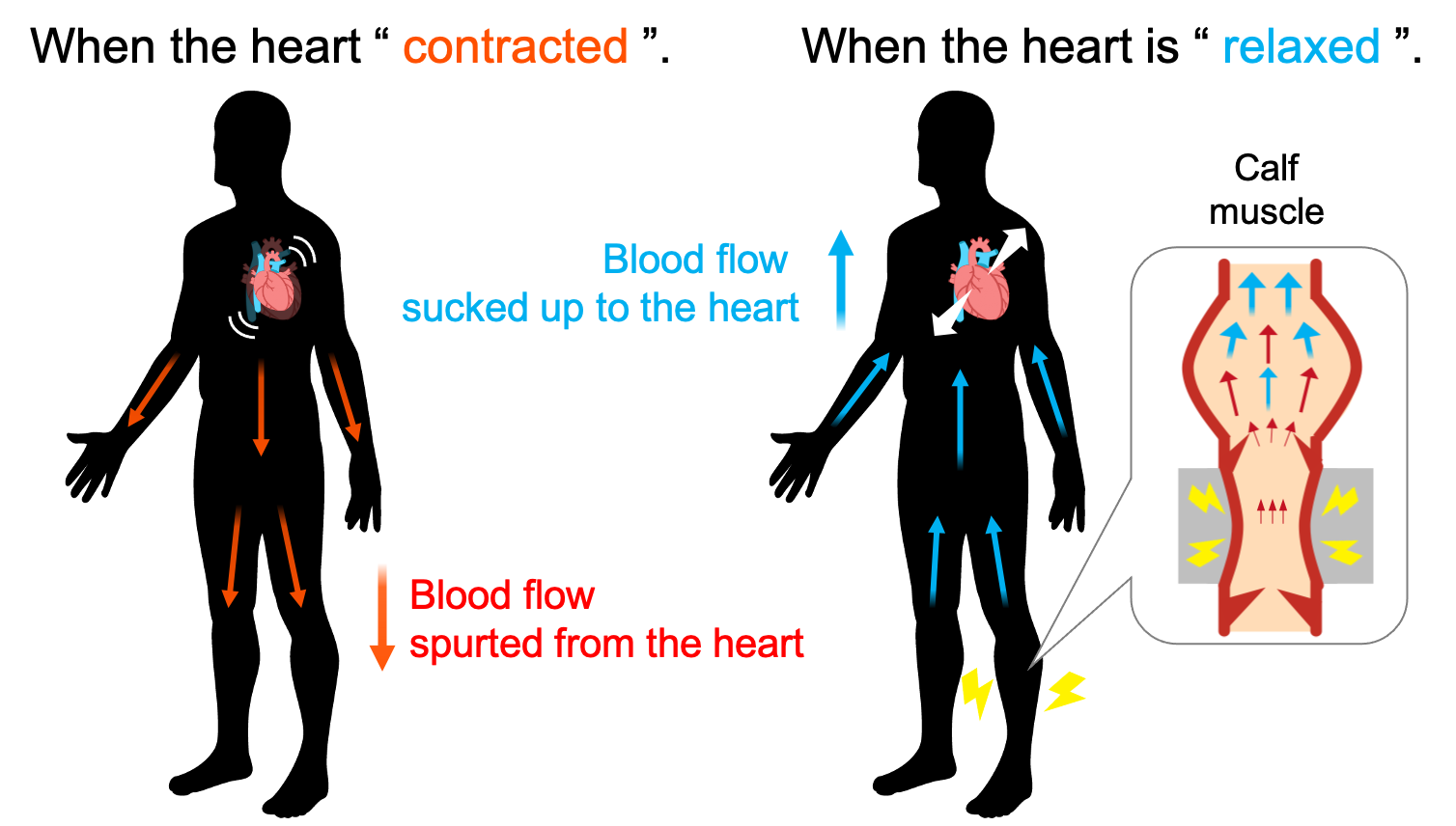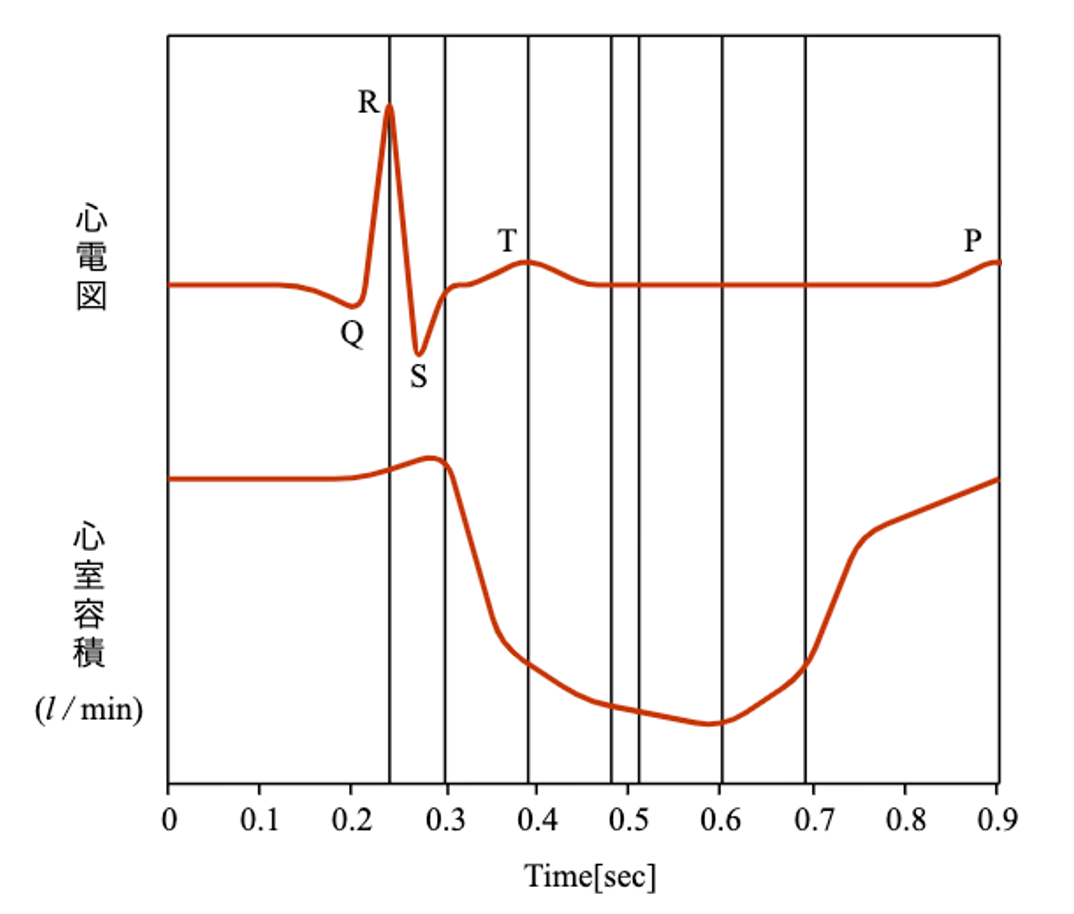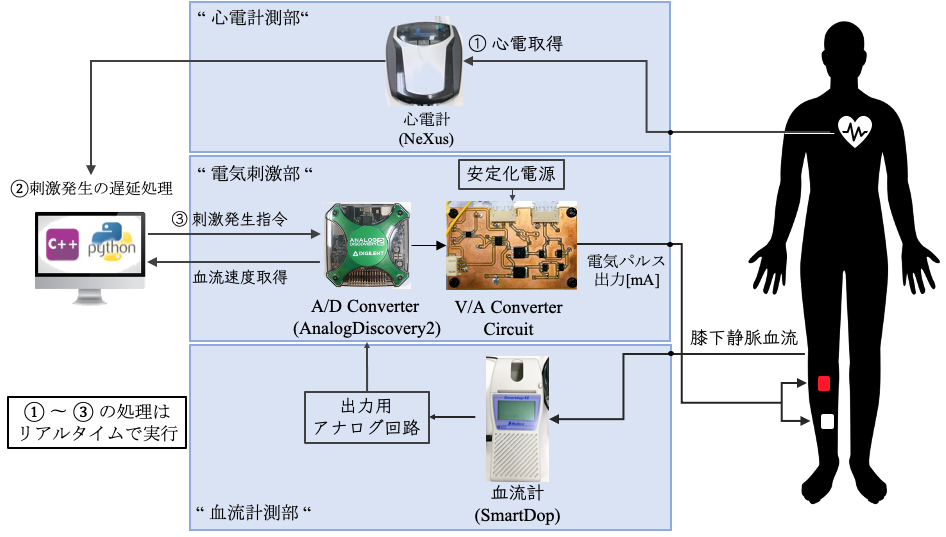TOP

Acceleration of blood flow by electrical stimulation to lower limb following cardiac rhythm

With the development of transportation and the increase in desk works, we are increasingly spending long periods in a seated position. This has resulted in deep vein thrombosis (DVT), in which blood clots form in the veins of the lower extremities
and obstruct blood flow, and pulmonary thromboembolism (PTE), in which the blood clots reach the lungs and cause breathing difficulties. Pulmonary thromboembolism, also known as "economy syndrome," is a problem in Japan, a country known for its natural disasters,
where deaths from overnight stays in cars are a frequent topic of conversation.
Recently, prevention using electrical stimulation has been attracting attention. This is possible by applying electrical stimulation to the lower limbs to voluntarily contract muscles and repeatedly push blood out of the veins,
thereby promoting blood flow. However, although previous studies have focused on frequency and current value as parameters of electrical stimulation, there has been no in-depth discussion on the timing of electrical stimulation.
Therefore, this study focuses on the blood circulation mechanism of the heart and proposes a system that determines the timing of electrical stimulation based on peak electrocardiographic information to obtain a high blood flow promoting effect.


The proposed system uses an electrocardiograph to acquire electrocardiograms and then electrically stimulates the muscles of the lower extremities to contract at the timing between the T and P waves shown in the left diagram.
By synchronizing this suctioning action with muscle contraction, it is hypothesized that the blood velocity in the lower limbs can be amplified, and a high acceleration effect can be obtained.
There is a propagation time of about several hundred milliseconds before the blood pushed throughout the body by the beating of the heart reaches the terminal blood vessels of the lower limbs.
To achieve perfect synchronization between cardiac and electrical stimulation, we have developed an electrocardiography-electrical stimulation control system, as shown in the figure on the right,
which enables control of the timing of electrical stimulation. After acquiring the electrocardiogram, the control program we created delays the generation of electrical stimulation for an arbitrary amount of time,
thereby realizing synchronization with the electrocardiogram.

